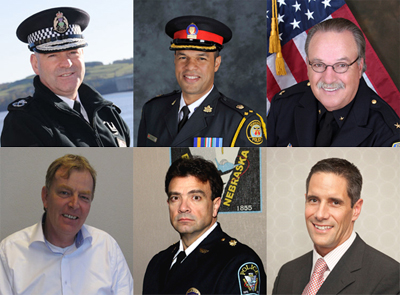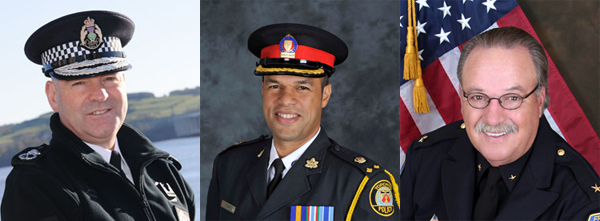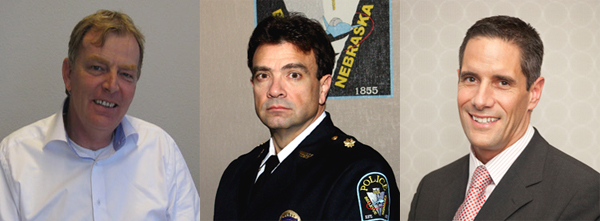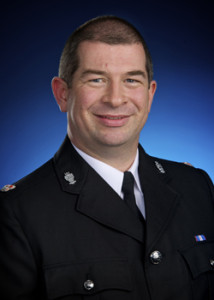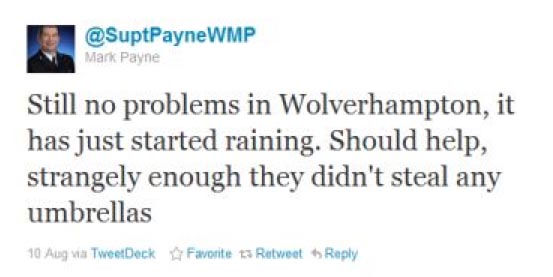Police executives are challenged every day with economic, social, professional and political influences that would cause many seasoned business executives to cash out and head for a tropical island. In most cases, one does not become a top cop without many years on the job, developing skills and knowledge in negotiation, diplomacy, and patience, as well as finding the right balance of ego versus humility.
Having ascended to such a position, why then do so many seasoned top law officers bristle when the subject turns to the proliferation of computer software applications that we’ve come to call “social media”? Perhaps it is because today’s police chiefs are finding themselves in the position where the new recruits have more knowledge than they do, on a topic that is increasingly affecting policing.
Chiefs today have been thrust into a world of the unknown like never before. Yet many chiefs around the world are in fact succeeding with the implementation of social media into their agency’s repertoire. Some are welcoming social media and all the challenges, risks, and opportunities that it brings to policing.
As a consultant who specializes in social media in policing, I have noticed that the police chiefs who are leading the way have much in common with each other, in terms of their leadership philosophy in a cyber world. They acknowledge the risks of social media, but they look for the rewards. They accept that mistakes will be made and that the social media landscape is a moving target, ever changing and testing their ability to remain nimble and yet steadfast in their adherence to high policing standards.
These chiefs also accept that they are not all-knowing. Regardless of whether they are young chiefs with just a year or so in their position, or are decades into the role, they are comfortable acquiescing to those among their ranks or even outside of policing who know more.
Perhaps most important, these chiefs understand and recognize that truly accepting social media into the profession of policing requires an acknowledgement that it runs counter to police culture as it has existed for many decades. Social media threatens the traditionally hierarchical, paramilitary structure of policing. It’s a bottom-up phenomenon that tends to flatten the law enforcement organizational structure. The police executives who truly understand social media and all it offers not only believe that to be true; they welcome it.
SIX CHANGE LEADERS
Six police chiefs from five countries were interviewed for this article and were asked to offer their thoughts. These chiefs were selected because they all are considered progressive and open-minded thinkers, and because they are all early-adopters of social media technologies in their agencies. They serve as mentors to their colleagues, and as examples of what is possible for those who understand that success in social media, as in other areas, comes down to old-fashioned principles of leading organizational change.
This article explores that leadership by illustrating several points made by the police chiefs:
- Overcoming resistance and leading change is a process.
- Leaders must be willing to understand the extent of what they do not know—and admit to it.
- There are risks to using social media, and mistakes will be made.
- Success requires trusting your people.
- Policy has to be flexible, because social media is a moving target.
- Social media is about people, not technology.
“KNOWING WHAT YOU DON’T KNOW”
Gordon Scobbie is the Deputy Chief Constable of the Tayside, Scotland Police Force. He is also the social media leader for policing in the UK. For the past two years, Scobbie has focused on creating an environment in which his peers can be comfortable with identifying the outer limits of what they know, and striving to get an idea of what lies beyond those limits. “It’s been about chipping away. Social media are becoming much more visible on the world stage. Leaders are accepting that they need to be aware of it,” Scobbie said. In the UK, Scobbie and his colleagues feel that only recently they have been successful in creating a safe environment where fellow leaders are comfortable to admit they don’t know everything they need to know.
Social media stands to revolutionize policing if fully embraced. Peter Sloly is a Deputy Chief in the Toronto, Canada Police Service. Toronto is already widely known for doing a lot of things right with social media. Yet the force recently went through a complete reevaluation of its social media program on a department-wide basis. For Sloly, social media represents an opportunity to decentralize communication, and that runs directly counter to policing’s paramilitary culture of command and control. “Getting the police culture to understand this thing comes with some very, very strong admissions as to where the weaknesses of our culture lie,” he said. For Sloly, social media is about honesty, transparency, and the willingness to be one of many voices, as opposed to the voice. It’s also about recognizing that people want to engage with police in social media, because they feel they are capable of helping police and contributing to public safety. “In fact, many of them will say we’ve got this all wrong,” he said. “They don’t want to be talked to, they want to be talked with.”
It’s a point not lost on Scobbie, who values feedback from people who aren’t necessarily seen as strong supporters of the police. “Our critics sometimes give us disruptive feedback, which shifts our thinking,” he said. “We can get feedback from them that’s actually helpful.”
DON’T OVERREACT TO MISTAKES
The collaborative opportunities with social networking tools increase an agency’s opportunities to put the interests of community first. For Craig Steckler, Chief of Police in Fremont, California, it’s about not being satisfied with the status quo. As the second longest serving chief in the state, he hasn’t gotten to where he is in his career by acting irrationally. Steckler said he has always embraced technology, but when it comes to the new media available today, he’s the first to say he’s “not the smartest guy on the block”. He added, “I probably understand policing better than a lot of the police officers in the department or even California for that matter. But I’m the first to acquiesce to others in areas where I’m not an expert. We hire people who want to be part of the department, and we tell them that they’re going to have a say in what they do and what we want them to do.”
Steckler acknowledges, as do all six chiefs interviewed, there are risks to endure with the use of social media. But he cautions that it’s important not to overreact when mistakes are made. If an officer does something in social media that compromises the department in some way, Steckler said it’s important not to turn that into a department-wide overreaction that will stifle progress. “I have no problem going up in front of the public and saying, ‘You know, what that officer did was not smart, and we will take corrective action. But this is new territory and mistakes are going to be made. So I’m sorry, and let’s move on.’ ”
OPPORTUNITIES CAN BE SEEN AS “CHANCES”
In the Netherlands, use of social media in policing has gone through a process of acceptance and growth. Inappropriate online posts by officers have resulted in discussion, but have not proved significant enough to stifle expansion. Guus Auerbach is the Chief of Digital Forensics at The Hague Police Service. His department has used social media for outreach for a couple years. He refers to opportunities as “chances” and added, “We’ve always focused on the chances, not the threats that social media brings to us. The chances are winning, and they are very diverse.”
The chiefs interviewed for this article understand that the inevitable mistakes that will occur in social media should not cause them to lose trust in their employees. John Stacey, Chief of Police in Bellevue, Nebraska, is a pioneer in the use of social media in policing. He formulated one of the first social media policies in early 2009. He was quick to recognize that while law enforcement policies are normally black and white, with social media you’re not dealing with an exact science. “You have to set boundaries, but these boundaries are going to be vague, because things are transpiring around you that have not really been built yet, and you don’t know where things are going to fall. They may have to be to the left or right of your boundary line, and you may have to move your boundary.” Coming to grips with the fact that social media management in policing isn’t as precise as most things in law enforcement is key to the process. Trust in the troops is imperative, Stacey added. “Trust should be unspoken. You should already be at that level if they’re working with you. If not, then you’ve got other problems that you need to deal with before you deal with social media,” he said.
In the final analysis, social media is about people, not technology – the people you serve, and the people you employ. It requires a major shift in thinking to resolve the tension between a “command and control” environment and one that is nimble and agile and dilutes control. Roman Quaedvlieg, the Chief of Police of the Capital Territory for the Australian Federal Police, spoke to the need for a more flattened policing structure. “It’s certainly not something that a lot of police leaders would have an appetite for, because it’s not something that’s ingrained within our DNA,” he said. “The more agile you make an institution, the more you increase its ability to respond to change, the more you dilute your control and increase that tension. I don’t know how to reconcile that yet.” Quaedvlieg said police leadership today requires the willingness to “shake off the shackles of 25 or 30 years of conservative institutional mentalities.” Resistance to social media in policing, as Quaedvlieg described it, is not assertive, but more passive. “It’s an ingrained lack of accommodation for innovation on an institutional basis.” he said.
SIX VOICES SAYING THE SAME THING
All six police leaders admitted that they were once skeptics about social media. Seeing the benefits has been an ongoing process. These chiefs don’t all know each other; in fact, only a couple of them have met in person. But their views on social media’s impact on policing are starkly similar. They all have reached the same conclusion: that is that it’s no longer a question of whether social media has a place in modern policing. The questions instead are: When does it happen? and How well will it get done?
This article was previously published in the July/August issue of “Subject to Debate” the official newsletter of the Police Executive Research Forum.
Lauri Stevens, an interactive media professional with over 25 years of media experience, is the founder and principal consultant with LAwS Communications. She founded LAwS Communications in 2005 to assist the law enforcement profession with the implementation of interactive media technologies. Ms. Stevens created the ConnectedCOPS.net blog and The SMILE Conference (Social Media the Internet and Law Enforcement). She is a regular speaker on the topic of law enforcement use of social media and, through LAwS Academy, conducts training all over North America. She is published regularly in law enforcement magazines and is the law enforcement columnist for The Social Media Monthly magazine. For additional information, go to http://lawscommunications.com/ or contact Ms. Stevens at lauri@lawscomm.net or 978-764-9887.





